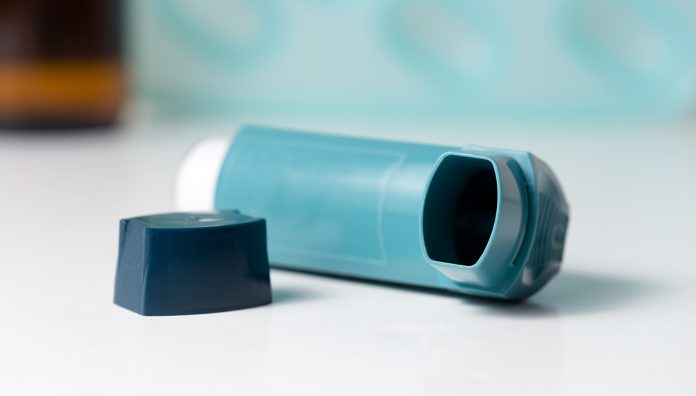The National Asthma Council Australia has released an updated version of its Australian Asthma Handbook, which includes a new treatment option for adults and adolescents (aged 12 years and over) with mild asthma.
Key points:
|
Version 2.1 of the handbook, which launched yesterday, outlines that Step 2 treatment will now include as-needed low dose budesonide-formoterol, taken for relief of symptoms instead of a daily maintenance with low-dose inhaled corticosteroids and short-acting beta2-agonists (SABAs) reliever when required.
‘In the past, the only option was corticosteroids every day as a preventer and another medication if you had symptoms,’ Professor Amanda Barnard, Chair of the Guidelines Committee for the National Asthma Council told Australian Pharmacist.
‘Now there is a new choice for patients with mild asthma – use of a reliever that contains a steroid as needed.’
Professor Barnard said four randomised, controlled, clinical trials had found that as-needed low-dose budesonide-formoterol reduced the risk of severe flare-ups to a similar extent as maintenance inhaled corticosteroids.
Reducing over-reliance on SABAs
The new recommendation would affect up to 70% of people with asthma, said consultant clinical pharmacist Debbie Rigby MPS.
Many patients purchased SABAs over the counter and relied on them for treatment of asthma flare-ups, she told Australian Pharmacist.
‘However, studies show that if a patient is using three or more canisters [of Ventolin] a year, they are at risk of a severe exacerbation.
‘If they are using 12, they are at greater risk of death … The use of anti-inflammatory relievers as needed is better than SABAs at reducing this risk.’
Ms Rigby said pharmacists had the opportunity to ask patients who came in to purchase SABAs over the counter about the frequency of their use.
‘If they say they are using Ventolin a couple of times a week, for example, the indication is that they need their treatment to be assessed by their GP,’ she said.
‘According to these new guidelines, these people would benefit from having an anti-inflammatory reliever for quick relief of symptoms.
‘It’s about making people aware there are options.’
While the new guidelines are a move away from the over-reliance on SABAs, there was still very much a place for the maintenance of regular corticosteroid treatment in people with moderate to severe asthma, added Ms Rigby.
‘One of the problems with treatment of asthma is the understanding of the disease,’ she said.
‘The reality is asthma is a chronic inflammatory condition. Steroids reduce the underlying inflammation and mucous production.’
Other treatment changes
In other additions to the handbook, a beclometasone-formoterol combination in a single inhaler is now recommended for adults with moderate–severe asthma requiring Step 3–4 treatment options, or as a maintenance-and-reliever therapy.
The use of dupilumab is also recommended as a new biological add-on therapy option for adults and adolescents with severe asthma, while a new lower strength fluticasone furoate 50 microgram for children, or for adults and adolescents whose inhaled corticosteroid dose has been tapered, is also included.
As part of the review process, the National Asthma Council Australia consulted with stakeholder groups including PSA, the Royal Australian College of General Practitioners and the Australian Primary Health Care Nurses Association.
Importantly, the council also sought feedback on the implementation of the update from people with asthma.
The full update also includes detailed guidance for implementation and practice tips, as well as health professional education to help in the implementation of the new guidelines.
For more information on the Australian Asthma Handbook Update, don’t miss PSA’s webinar on 30 September. For more information and to register, click here.



 Professor Margie Danchin[/caption]
Professor Margie Danchin[/caption]

 Dr Peter Tenni[/caption]
Dr Peter Tenni[/caption]
 How should we deprescribe gabapentinoids, according to the Maudsley Deprescribing Guidelines[/caption]
How should we deprescribe gabapentinoids, according to the Maudsley Deprescribing Guidelines[/caption]



 Pharmacists have always prescribed, but they have the potential to prescribe much more
Pharmacists have always prescribed, but they have the potential to prescribe much more






